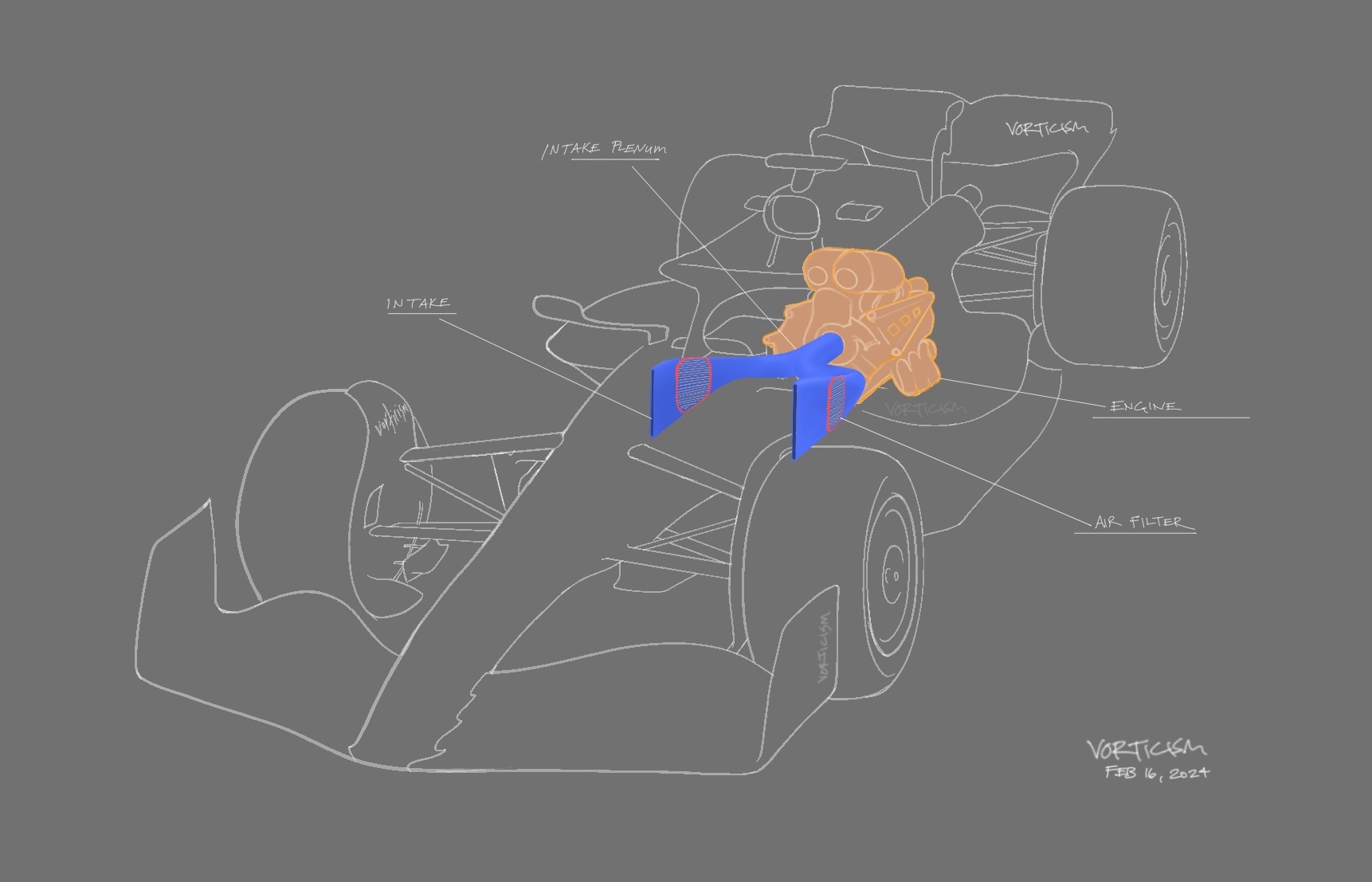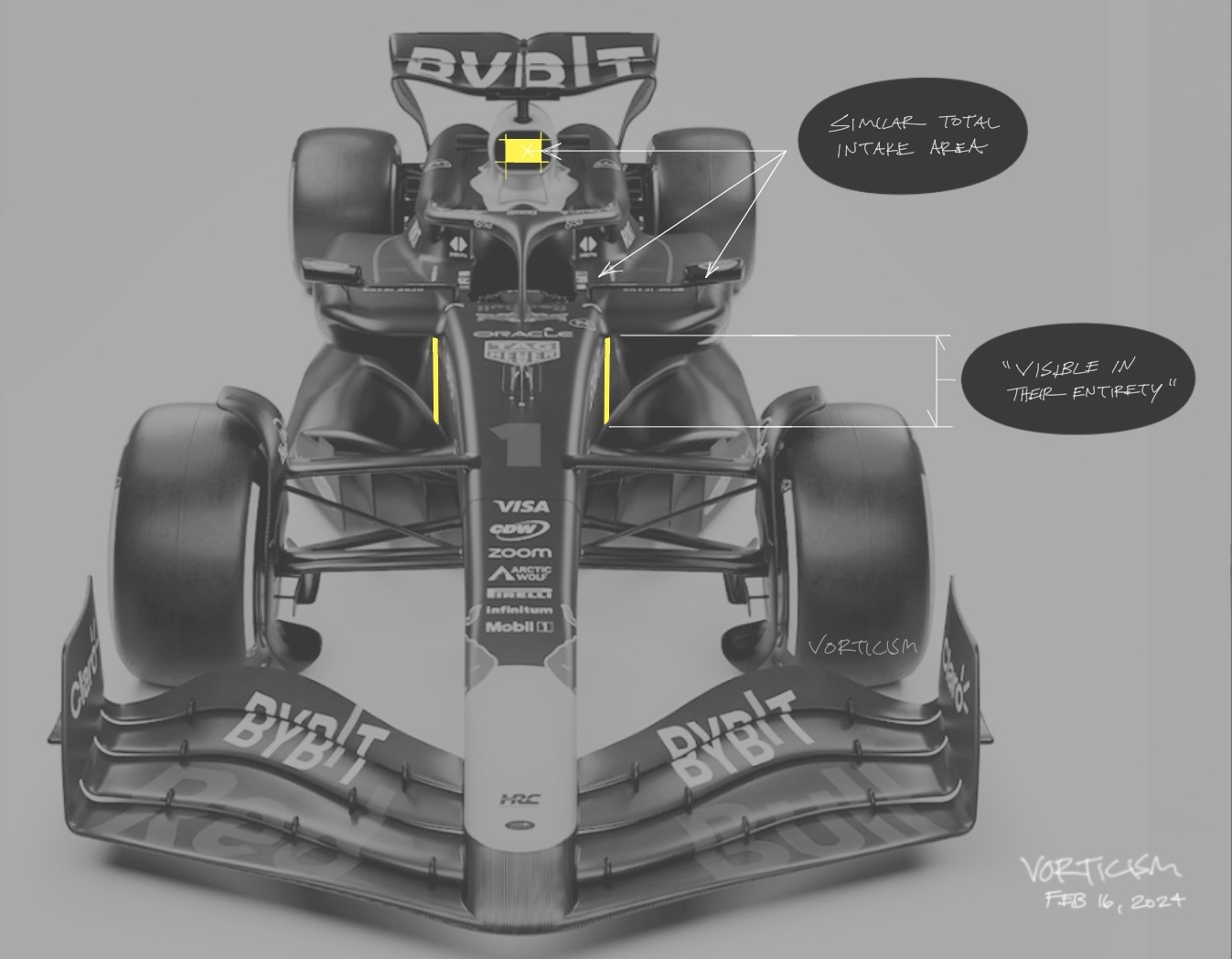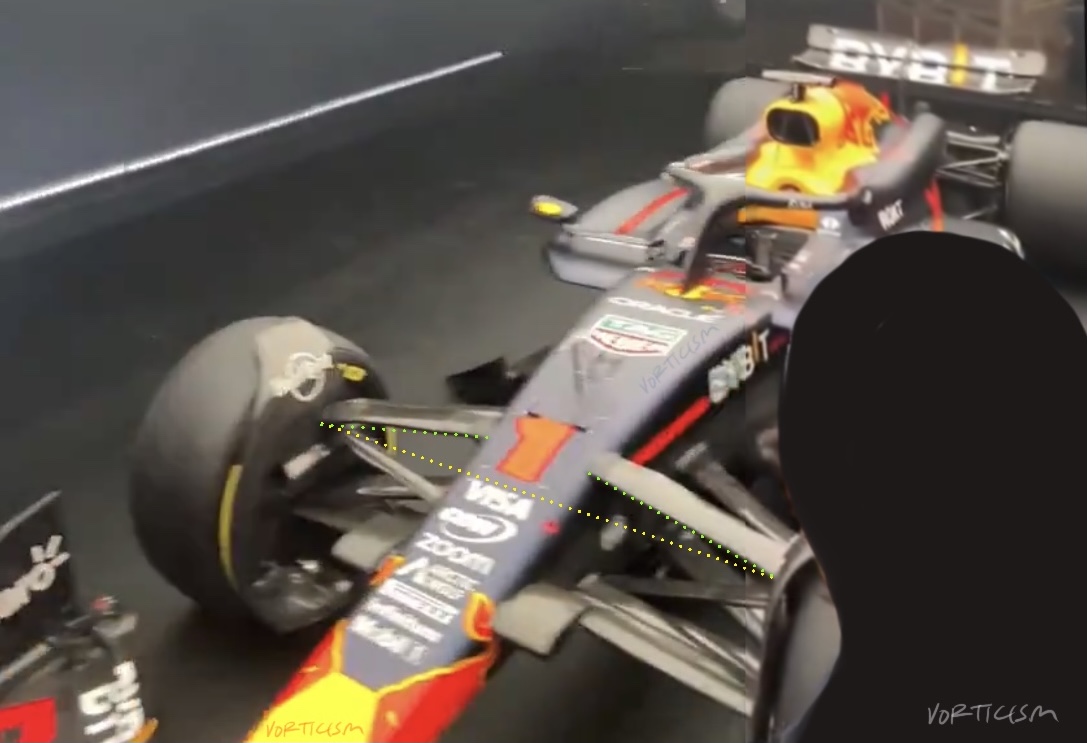What’s that, anon? You didn’t know it’s it’s been legal to use two engine air intakes since 2014? I’m reasonably confident that Red Bull might been the first team to finally try it. I’ve illustrated the concept below.




The rule for engine air intakes does not specify any y-axis locations, only z and x. The same small free loophole zone that Ferrari exploited for their S-duct I propose is being used here as well, except as an engine intake rather than for entry into a duct. The vertical slots visible on the RB20 in photographs are located within the permitted zones of engine intake air; yes, even in that unusual location.
“But the air there! It is dirty!” you’ll say; but anon, do you not remember that the halo has been compromising clean flow the roll hoop inlets for many seasons now? The airflow may not be so disadvantageously noisy nor turbulent compared to halo wake. Combine that with the new shark-mouth/brimmed sidepod inlet present on RB20 which helps constrain and compile airflow through that region, while perhaps helpfully increasing pressure and stagnation in a way that could not be achieved ahead of a current F1 roll hoop inlet.
Also consider that such a thin cheese grater type of inlet will do well at eating the oncoming boundary layer present in this aerodynamically important area. The compressor will supply the two intake plenums with a constant source of manifold vacuum, and the combined effect of boundary layer thinning and increase in total mass flow could help the various floor edge functions.
With no engine air intake in the roll hoop, the roll hoop becomes exclusively used to feed centerline radiators. This could allow the sidepod inlets to be reduced in size. The Merc type pretzel shape roll hoop inlet I do not consider to be aerodynamically ideal due the that shapes involved; so why would RB bother with it? This was the detail that seemed most odd to me on RB20. If there is a greater mass of radiator core placed higher in the car, then they would need to take weight out of the roll hoop, and an A frame roll structure as in the center of the pretzel, provides that.
The regulation which permits engine air intakes across a rather large span:
5.15.1 With the exception of incidental leakage through joints or cooling ducts in the inlet system (either into or out of the system), all air entering the engine must enter the bodywork through a maximum of two inlets which are located on a single X plane between XC= -850 and XR= -500 and above Z=200.
Furthermore, any such inlets must be visible in their entirety when viewed from the front of the car without the driver seated in the car and with the secondary roll structure and any parts attached to it removed (see Article 12.4.2).
The original intent for this reg must have been to enable use of the main sidepod inlets as the air intake(s) in addition to feeding the radiators. I'm 90% sure I have the dimensions correctly interpreted, but I'd be happy to be proven wrong. I wouldn't normally go out so far on such a limb but what struck me was the coincidence of the rules seeming to permit an intake in the exact area. It was, for me, too much of a coincidence. Why not employ this on RB18 or RB19? Perhaps there was too much of a challenge packaging it, as those cars were said to have been over regulation weight.












